The Claypotts Siege of autumn 1977 was a night of terror, hijacking and hostage-taking usually reserved for a Hollywood movie set.
On an evening when more than 100 guns were issued to police officers, young constables more accustomed to patrolling the quiet beat of the bungalow suburb stalked the cordoned-off area with shotguns over their shoulders.
One of the most dramatic moments in Dundee’s crime history started when an armed robbery in Angus went wrong before things quickly spiralled out of control.
‘Bonnie and Clyde’ pair were on the run
It all centred on George ‘Geordie’ Morrison.
He was on the run for robbing a bookies at knifepoint of £381 in his native Ayr on September 12 1977.
The 26-year-old – described in a confidential police report as “a junkie and violent with it” – decided to flee south to London where his crimes continued.
He went on to kill a mother and son during one of his raids and soon headed north with his 21-year-old girlfriend Elizabeth Green, staying with family in the Montrose area.
That’s where Morrison then stole a 12-bore double-barrelled shotgun from a gunsmith’s shop before buying 25 cartridges from a gunsmith’s in Brechin on October 28.
He sawed the barrels and shortened the stock.
That evening Morrison and Green entered Ron Harris’s mini-market on North Esk Road with the sawn-off shotgun, demanding cigarettes, sweets, tights and money.
Morrison told Green he was going to shoot the owner.
Mr Harris was made to kneel on the floor and his hands were tied behind his back, but, as customers walked in, Morrison panicked and rushed out to get a vehicle.
The first person he approached with his shotgun, a van driver, took one look at the pair, grabbed his keys and ran off with his seven-year-old son under his arm.
But oil worker Lee Pascoe and his wife June, 21, were less lucky.
They fell for Morrison’s story that his girlfriend required urgent hospital treatment for a burst appendix.
When they got in the car, Morrison suddenly revealed the gun.
He threatened to shoot them and forced Mr Pascoe at gunpoint to drive the Ford Capri to Dundee where they were pursued at high-speed down the A92 by police.
Lying in wait on Arbroath Road, near the Claypotts roundabout, DS Jim Melville was in a CID car driven by colleague DC Alastair Taylor, a tough, no-nonsense ex-marine.
Seizing the chance when Mr Pascoe moved out to overtake a tractor, DC Taylor rammed the Capri into the side of the road as marked police vehicles crunched in front and rear.
Morrison allowed Mr Pascoe to exit the vehicle to pass a message to the police.
It was simply: “I’m armed. I mean business.”
A gun blast rang out and police retreated.
The siege that was to last until the early hours of Saturday morning had begun.
And the next six hours saw police operations on a scale unparalleled in Dundee’s history.
A grim war of nerves began
At gunpoint, Morrison moved Green and Mrs Pascoe to the damaged police car.
The Ayr criminal put the shotgun against Mrs Pascoe’s head.
He wrapped a rope around her neck and tied it to his trigger finger, so that if she moved, or attempted to escape, his terrified hostage would be killed.
The slightest movement and the gun could have gone off.
Almost every senior officer in the force, including Chief Constable John Little, gathered at the scene and a grim war of nerves began.
DS Melville talked his way into the gunman’s confidence, with cigarettes and tins of Special Brew shared round in a desperate effort to keep Morrison calm.
During one of the exchanges, Chief Superintendent Frank Young managed to pass a revolver to DS Melville.
The detective slipped this into his trouser pocket, a decision which may have saved his life, for, minutes later, the suspicious gunman demanded he open his jacket to prove he was unarmed.
Morrison then made a demand which would ultimately transfer the siege out of Tayside Police’s hands and into those of their Strathclyde counterparts.
He said he wanted to go back to his birthplace — it was his birthday the next day — and demanded DC Hans Miller of Ayr Police be brought through to drive him.
Before the robbery he’d been arrested a couple of times by DC Miller — and on both occasions he’d made threats against the officer’s life.
He arrived at 1.25am and a deal was concluded — Mrs Pascoe would be released and Chief Constable Little and DS Melville volunteered to join DC Miller as hostages.
The housewife’s six-hour nightmare – roped to the gunman’s trigger finger – was over and she ran sobbing into her husband’s arms.
‘I began to think I was driving the last 10 miles of my life…’
It was 1.30am when a five-car motorcade set off at high speed for the west coast.
During that nerve-wracking 150-mile cross country journey, Morrison told the policemen he could easily take all three of them with both barrels.
“It wasn’t until we were about 10 miles from Ayr that I became really apprehensive for the first time,” DS Melville said afterwards.
“Morrison’s mood suddenly changed again and he became very nervous and edgy.
“The Chief Constable, who had been marvellous all the way through after striking up an instant rapport with Morrison, quickly changed the subject and the moment passed.
“But for a second or two I began to think I was driving the last 10 miles of my life.”
Chief Constable Little and DS Melville left the hostage car on arrival in Ayr.
That left DC Miller alone with the gunman, who took the opportunity to come clean about the London killings.
Policemen with a wide range of firearms circled the hostage car with their vehicles.
After a short time, DC Miller was released by Morrison.
A few minutes later, Chief Constable Little approached the car and opened the door.
Morrison’s girlfriend Green stepped out before walking to the police cordon.
Suddenly, Morrison emerged, still carrying the weapon.
The Chief Constable raised his pistol towards Morrison, who dropped to his knees and begged the police: “You shoot mad dogs don’t you? Well, shoot me!”
In a final defiant gesture before eventually giving himself up, Morrison asked if he could empty the shotgun into the police car he had travelled in.
He blasted the vehicle and, with his gun empty, he was apprehended by officers.
It was 4.45am and the drama was at an end, more than 10-and-a-half hours after it had all begun 150 miles away in Montrose.
Morrison asked for no mercy…
At Edinburgh High Court the following year, Morrison was sentenced to 15 years.
Solicitor Robert Henderson said: “I have been instructed not to ask for any leniency or mercy of any kind.
“Morrison accepts full responsibility for all that took place and stresses the minimal part played by Green in the proceedings.
“Had it not been for Green, who had a soothing influence on Morrison, the charges he now faces would have been much more serious.”
Part of a psychiatric report was read out in court which stated that Morrison had “a tendency for violence which appeared to be inherent in his make-up”.
Green was jailed for six months when she admitted a single charge of assault and robbery in the Montrose supermarket operated by Ron Harris.
Solicitor Donald Macaulay said his client went along with Morrison to keep things fairly calm but once in the hostage car she was just as terrified as the Pascoes.
As soon as sentence was passed he was taken to St Albans Crown Court where he was given life after pleading guilty to the double murder of Mary Shore, 76, and her son Dennis Crabb, 44, in London.
Chief Constable Little, DS Melville and DC Miller were awarded the Queens Gallantry Medal.
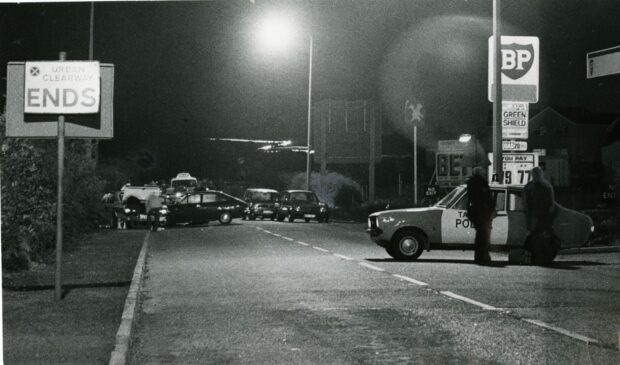
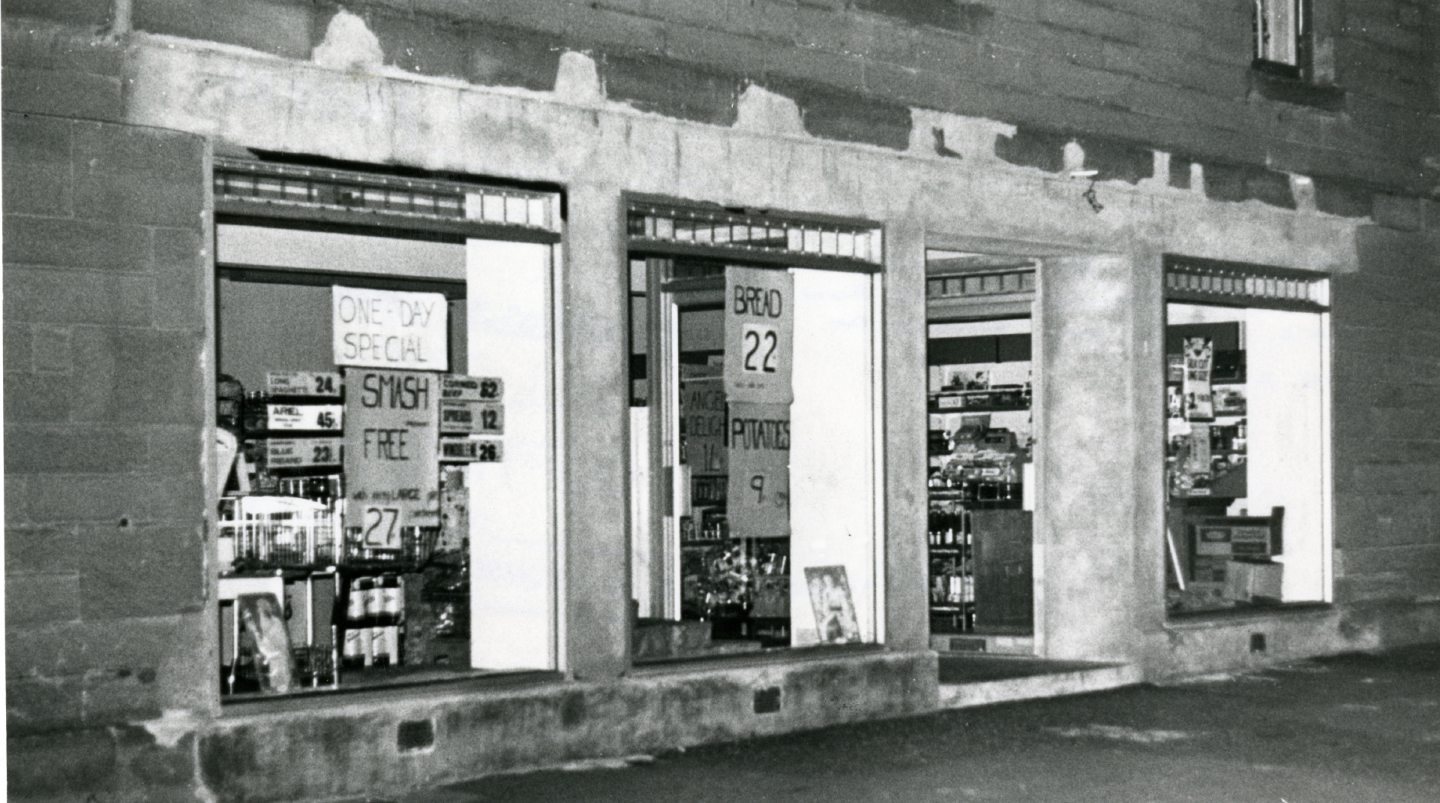
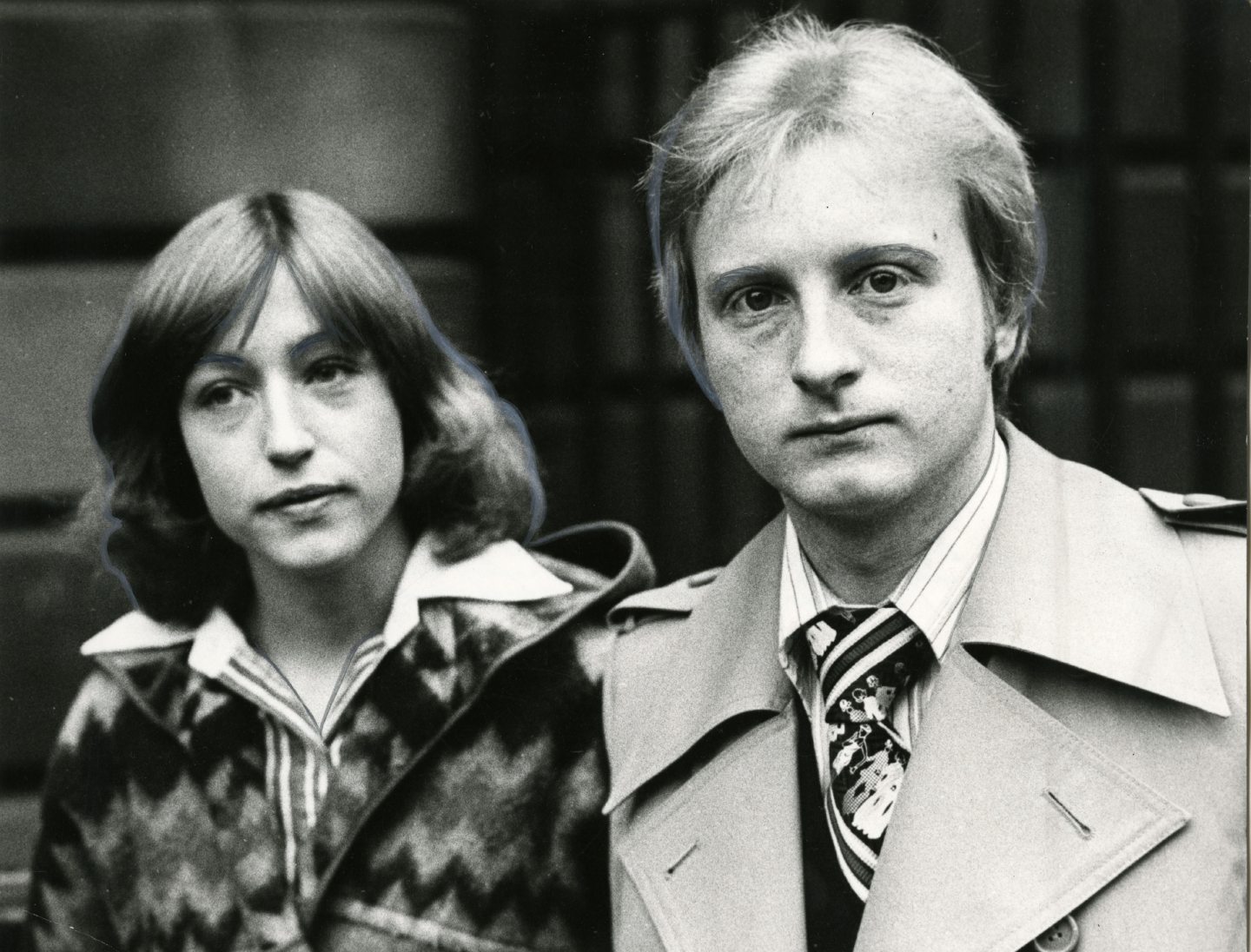
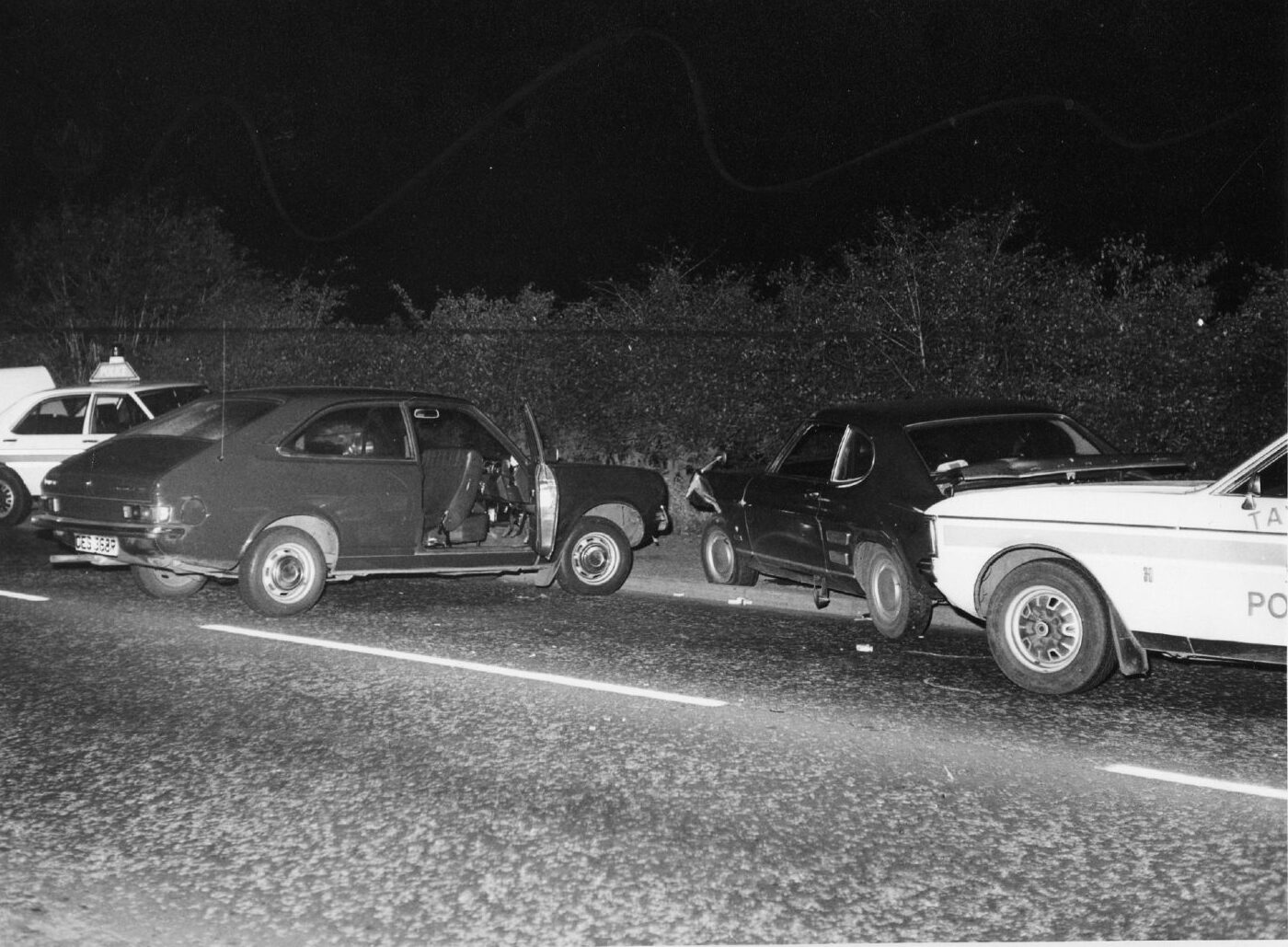
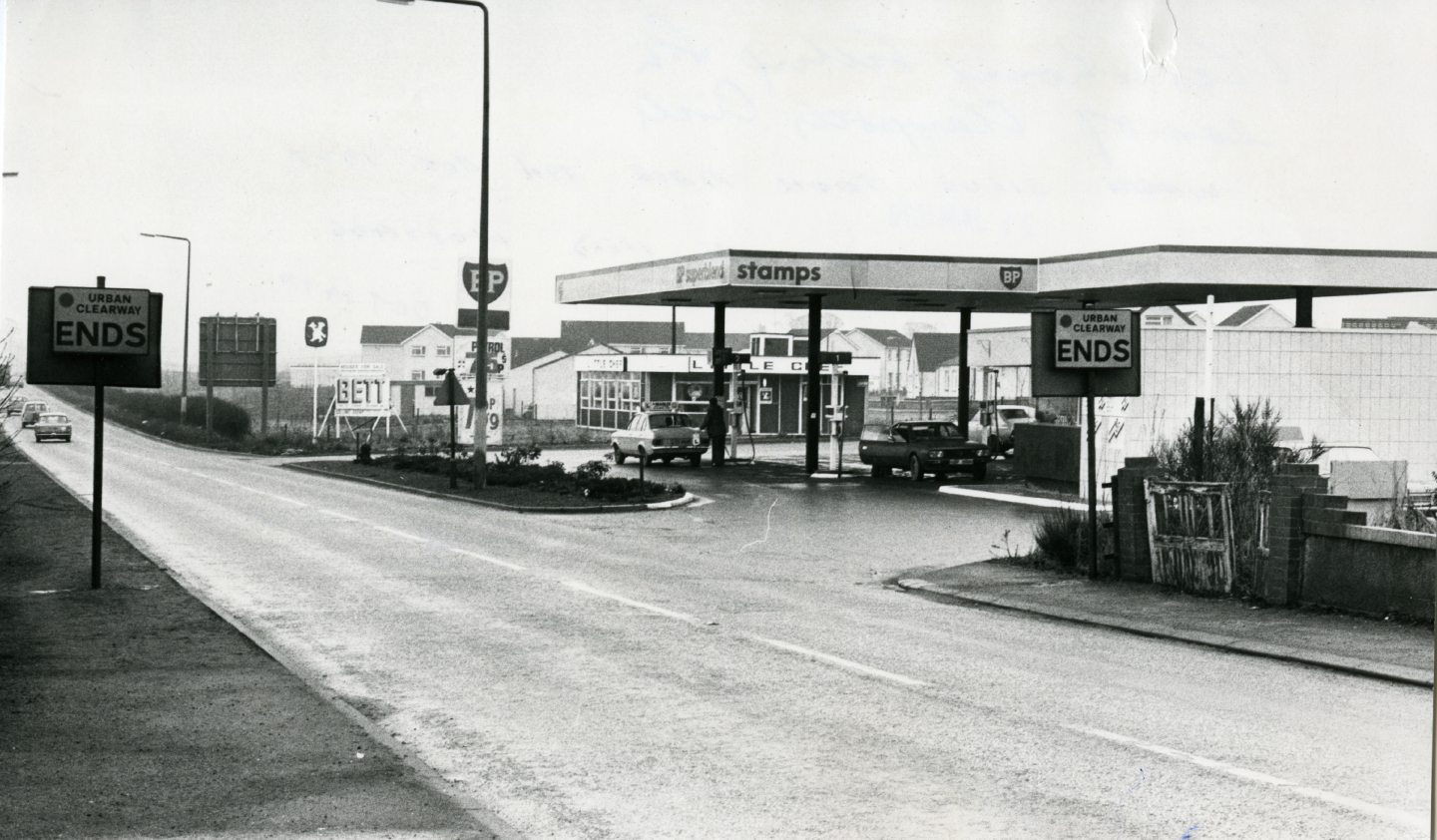
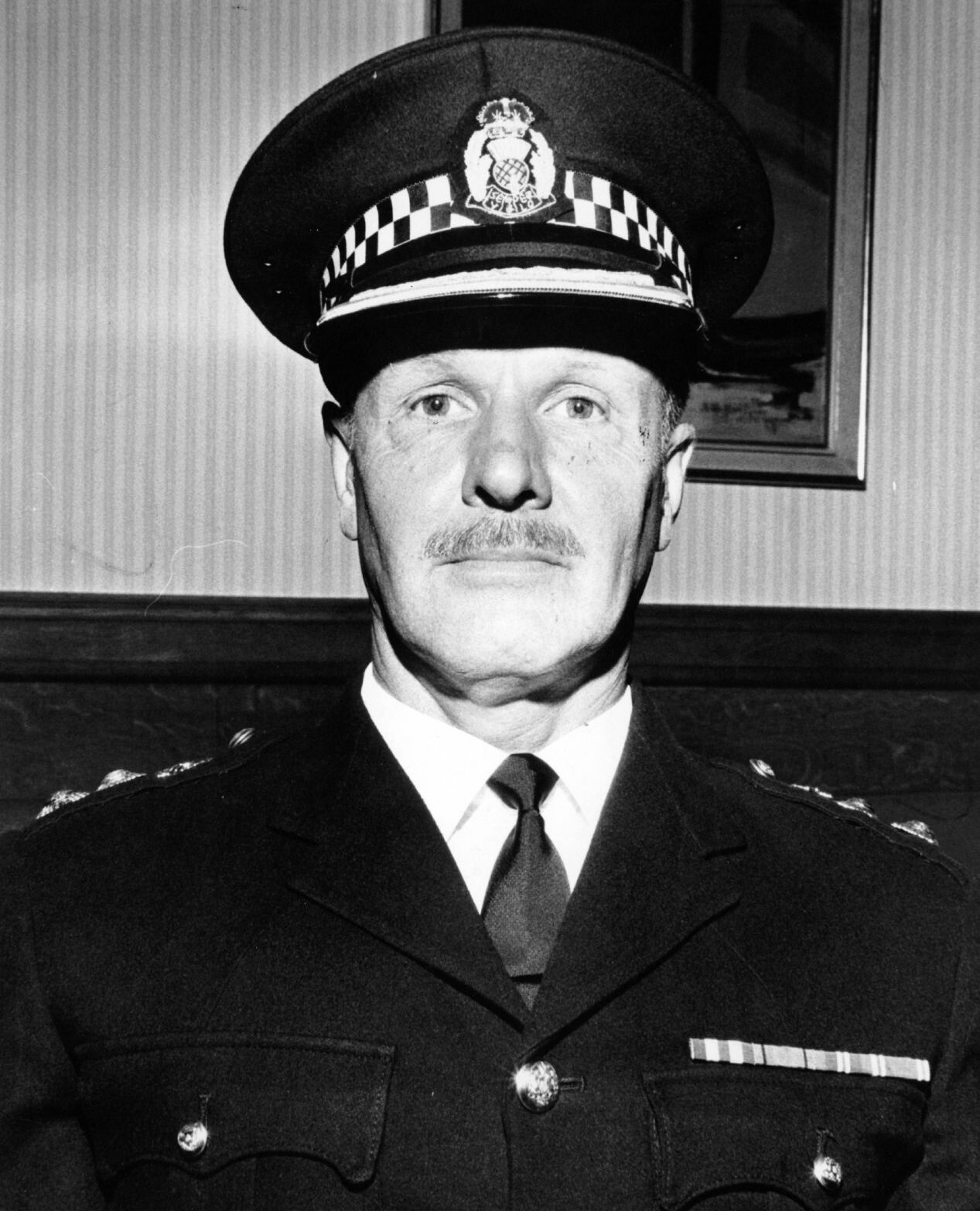
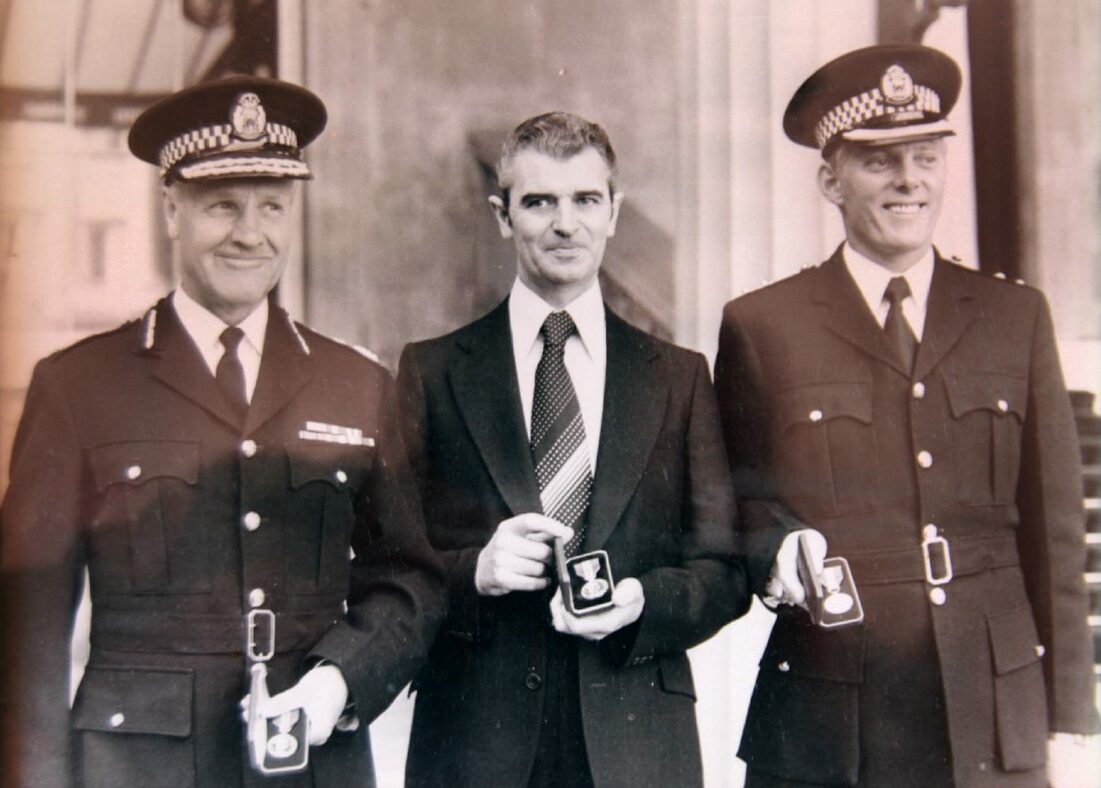










Conversation